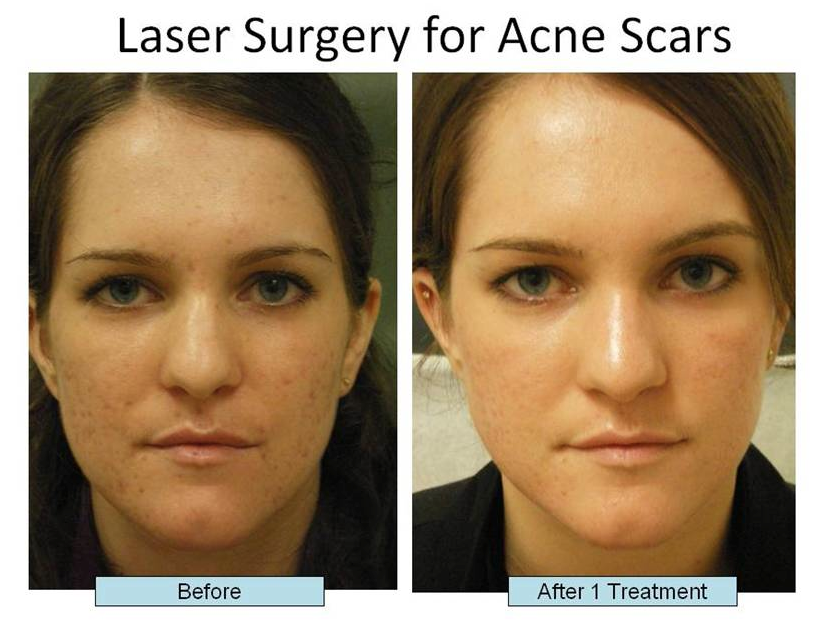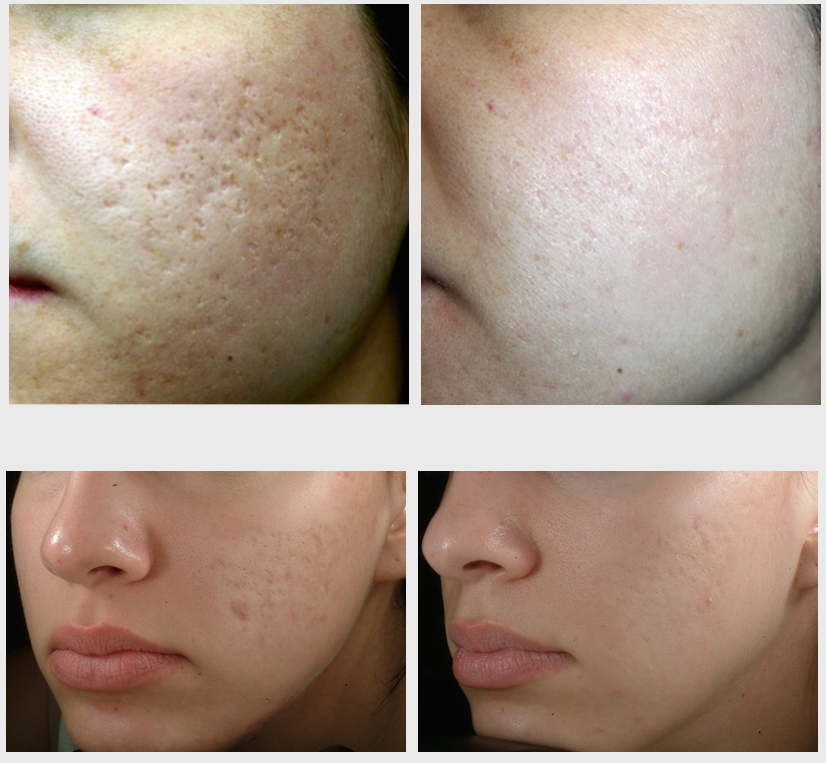Discovering Skin Conditions: Dealing With and identifying Acne Scars for Healthier Skin
Acne marks stand for a significant concern for individuals looking for to preserve healthy and balanced skin, as they can affect both appearance and self-confidence. Recognizing the various kinds of scars, from atrophic to hypertrophic, is vital for figuring out appropriate treatment choices. While expert treatments like chemical peels and microneedling can be efficient, the importance of personalized treatment plans can not be overemphasized. In addition, preventative actions play an essential function in minimizing future scarring. As we discover these elements, one need to think about exactly how the ideal strategy can cause transformative results.
Recognizing Acne Scars
Recognizing acne marks is critical for any person who has actually experienced extreme acne, as these marks can have a long lasting impact on both physical look and emotional health. Acne marks form when the skin goes through inflammatory responses throughout active acne lesions. The extent of scarring is commonly affected by aspects such as the kind of acne, its duration, and individual skin features.
The body's natural recovery process can cause either atrophic marks, which appear as depressions in the skin, or hypertrophic scars, which are raised and result from overproduction of collagen. In addition, the mental toll of acne marks ought to not be undervalued; several individuals report sensations of embarrassment, anxiety, and reduced self-esteem. This psychological worry can impact social communications and total lifestyle.
Attending to acne marks requires a comprehensive understanding of their formation and effect. Awareness of the capacity for long-term effects related to neglected marks can encourage individuals to look for proper treatments. Early treatment and efficient management approaches can substantially boost skin appearance and enhance psychological strength, emphasizing the significance of understanding the intricacies surrounding acne scars.
Types of Acne Marks
Acne scars can be categorized right into unique types, each displaying special characteristics and needing specific treatment techniques. The primary kinds of acne marks consist of atrophic, hypertrophic, and keloid scars.

Hypertrophic marks, in contrast, are elevated over the skin level and are the result of extreme collagen production throughout the recovery procedure. They normally remain within the limits of the initial acne lesion. Keloid marks are comparable yet prolong past the original injury site, developing larger, increased areas that can be itchy or painful.
Understanding these types of marks is necessary for picking proper treatment alternatives. Different marks might react much better to details therapies, such as laser treatments, fillers, or surgical treatments, emphasizing the value of a tailored approach to acne mark monitoring.
Determining Your Scars
When reviewing the appearance of your skin, it is important to accurately recognize the type of marks existing, as this will certainly inform the most reliable treatment method. Acne marks generally come under 2 categories: hypertrophic and atrophic scars. Atrophic marks, which are the most common, appear as clinical depressions or imprints on the skin. These can additionally be classified into ice-pick scars, boxcar marks, and rolling scars, each showing distinct attributes and requiring various techniques for analysis.
Hypertrophic scars, on the various other hand, are increased and occur due to too much collagen production during the recovery process. Acknowledging the certain functions of your marks-- such as width, appearance, and deepness-- is crucial for proper identification. Additionally, think about the circulation of marks throughout your skin, as this can indicate the extent and period of the acne problem.
Involving with a dermatologist can provide useful understandings into the nature of your marks, helping in the differentiation between various kinds. A detailed understanding of your marks will eventually bring about a more tailored and reliable treatment plan, guaranteeing a more clear and much healthier complexion.
Treatment Choices Offered
Identifying the details kind of acne marks existing on your skin prepares for checking out reliable therapy options. Typical kinds of acne scars include atrophic (depressed), hypertrophic (elevated), and post-inflammatory erythema.
For atrophic scars, choices such as chemical peels, microneedling, and laser resurfacing are widely used. Chemical peels utilize acids to eliminate the external layer of skin, advertising new cell growth. Microneedling entails little needles that produce micro-injuries, promoting collagen production. Laser resurfacing targets harmed skin cells, improving texture and tone.
Hypertrophic marks can be treated with corticosteroid injections to squash the scar or laser treatment to minimize inflammation and improve look. skin rejuvenation treatments. Silicone gel sheets and pressure dressings might likewise aid in managing elevated marks
In addition, facial fillers can momentarily complete depressions from atrophic scars, while surgical excision might be proper for severe situations. Each therapy Going Here option has its factors to consider and benefits, making it vital to seek advice from with a skin specialist. They can offer customized referrals based upon the type and intensity of your marks, as well as your skin kind and overall health.
Tips for Avoidance
Efficient avoidance approaches can considerably lower the probability of developing acne marks. The very first step is to maintain a constant skincare regimen that consists of gentle cleansing, exfoliation, and hydrating. Using non-comedogenic products aids avoid clogged pores, which can exacerbate acne. Furthermore, including topical treatments having salicylic acid or benzoyl peroxide can properly lessen and take care of breakouts swelling.
Preventing the impulse to pick or stand out acne sores is crucial, as this can cause much deeper skin damages and increase the danger of scarring. Rather, take into consideration using a chilly compress or over-the-counter treatments to minimize swelling and soreness.
Sunlight protection is another crucial facet of prevention; ultraviolet (UV) rays can darken scars and impede the healing process. Applying a broad-spectrum sun block with at the very least SPF 30 daily can protect the skin and promote even healing.
Lastly, keeping a well balanced diet plan abundant in minerals, antioxidants, and vitamins sustains skin health and recovery. Staying hydrated and taking care of tension degrees can also play a significant role in minimizing acne flare-ups. By implementing these techniques, people can significantly reduce their opportunities of developing acne marks.

Final Thought
To conclude, understanding and identifying acne marks is essential for efficient therapy and achieving much healthier skin. Numerous sorts of acne marks, consisting of atrophic and hypertrophic marks, demand details interventions customized to private requirements. Treatment alternatives variety from click here to find out more chemical peels and microneedling to corticosteroid shots, stressing the importance of seeking advice from a dermatologist. Additionally, adopting a mild skin care routine and protecting the skin from UV direct exposure can significantly contribute to the prevention of additional scarring and navigate to these guys overall skin health.
The body's all-natural healing procedure can result in either atrophic scars, which show up as clinical depressions in the skin, or hypertrophic scars, which are increased and result from overflow of collagen. They are more divided right into 3 subtypes: ice pick scars, boxcar scars, and rolling marks. Acne marks generally drop right into two groups: atrophic and hypertrophic scars. These can additionally be classified into ice-pick scars, boxcar marks, and rolling scars, each exhibiting distinct attributes and requiring various techniques for analysis.
Numerous types of acne scars, including atrophic and hypertrophic scars, necessitate specific interventions customized to individual requirements.